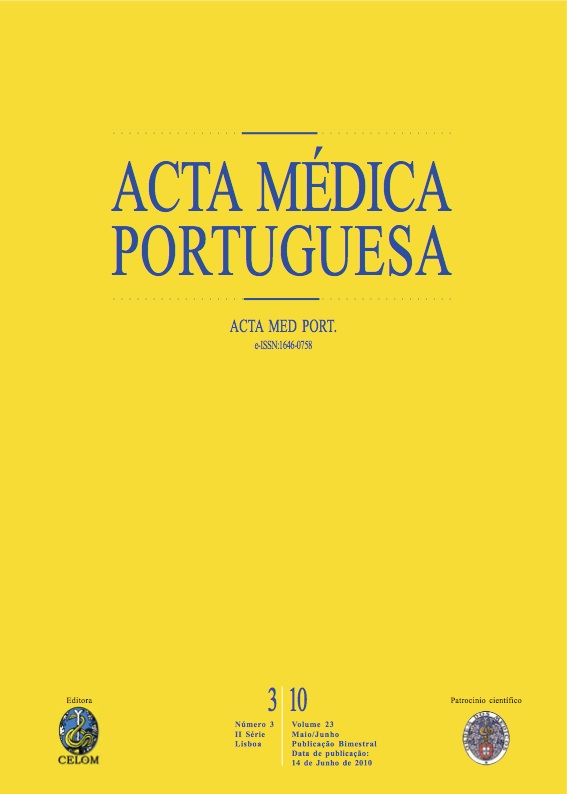Maus-tratos infantis - a realidade de um hospital distrital!
DOI:
https://doi.org/10.20344/amp.638Resumo
In Portugal child abuse is a reality, although its true incidence is still unknown.Retrospective study by consulting child abuse processes of children hospitalized in Paediatric Nursery and Neonatal Special Care Unit of Centro Hospitalar de Setúbal, E.P.E between January 1, 2006 and June 30, 2008. The following variables were studied: sex, age, year of hospitalization, length of stay, type of abuse, aggressor, drug abuse in family; mother's age, entities involved in the process and the applied measures to promote and/or protect.Sample of 65 children, with discrete predominance of male (35/65) and mostly < 1 month (n = 39). The largest number of hospitalizations was in 2007 (n = 34) and in 77% of the cases the length of stay was less than one month. It was practiced more than one type of abuse in 30,8% of the cases, negligence being the most practiced, in 80% of cases, followed by physical abuse, in 20%. The aggressor belongs almost always to nuclear family (59/65), being the mother in 41,5% of cases. There was at least 27,7% cases of children with parental drug abuse and 13, 8% with adolescent mothers. The support near the parents was the measure of promotion and protection applied in 43% of children and two children were adopted. In 80% of the cases, there was intervention of the Comissão de Protecção de Crianças e Jovens and six cases were solved just by the social services of the hospital.The precocious detection of risk factors such as pregnancy in the adolescence and drug abuse, among others, as well as the follow-up and signalling of dangerous situations are professional obligations of health institutions and must be stimulated. In spite of efforts in updating the social support and the legal framing of these situations, the prevalence of child abuse remains high.Downloads
Downloads
Como Citar
Edição
Secção
Licença
Todos os artigos publicados na AMP são de acesso aberto e cumprem os requisitos das agências de financiamento ou instituições académicas. Relativamente à utilização por terceiros a AMP rege-se pelos termos da licença Creative Commons ‘Atribuição – Uso Não-Comercial – (CC-BY-NC)’.
É da responsabilidade do autor obter permissão para reproduzir figuras, tabelas, etc., de outras publicações. Após a aceitação de um artigo, os autores serão convidados a preencher uma “Declaração de Responsabilidade Autoral e Partilha de Direitos de Autor “(http://www.actamedicaportuguesa.com/info/AMP-NormasPublicacao.pdf) e a “Declaração de Potenciais Conflitos de Interesse” (http://www.icmje.org/conflicts-of-interest) do ICMJE. Será enviado um e-mail ao autor correspondente, confirmando a receção do manuscrito.
Após a publicação, os autores ficam autorizados a disponibilizar os seus artigos em repositórios das suas instituições de origem, desde que mencionem sempre onde foram publicados e de acordo com a licença Creative Commons









